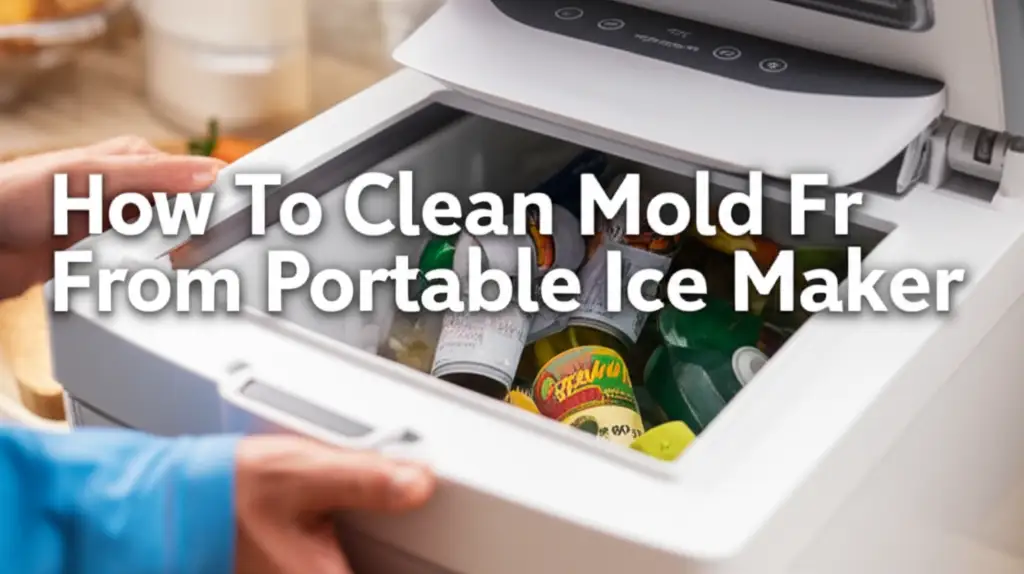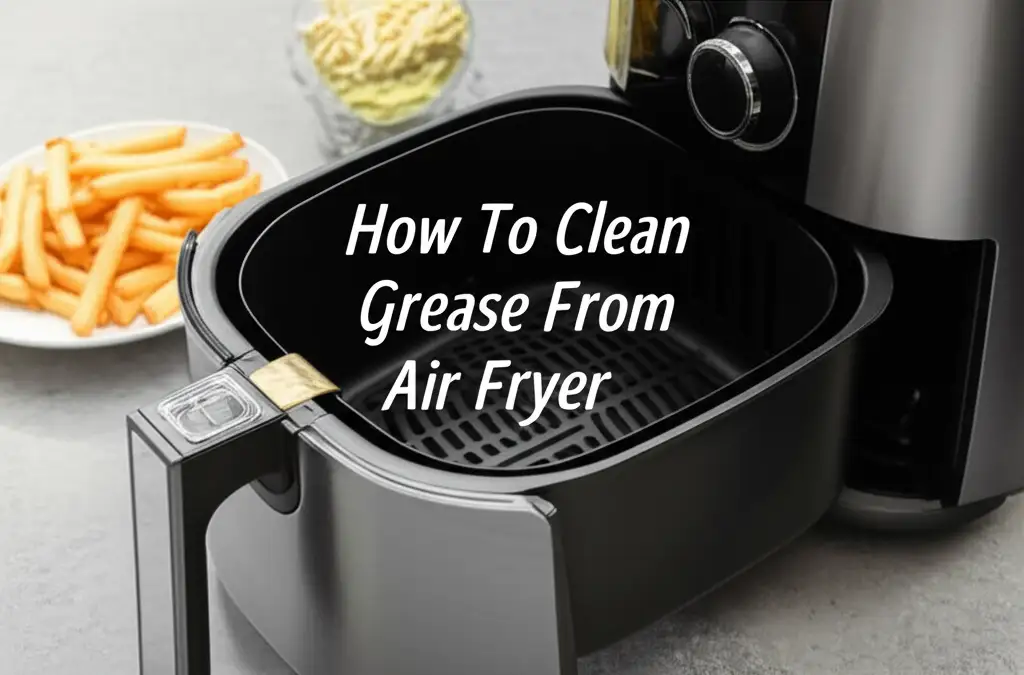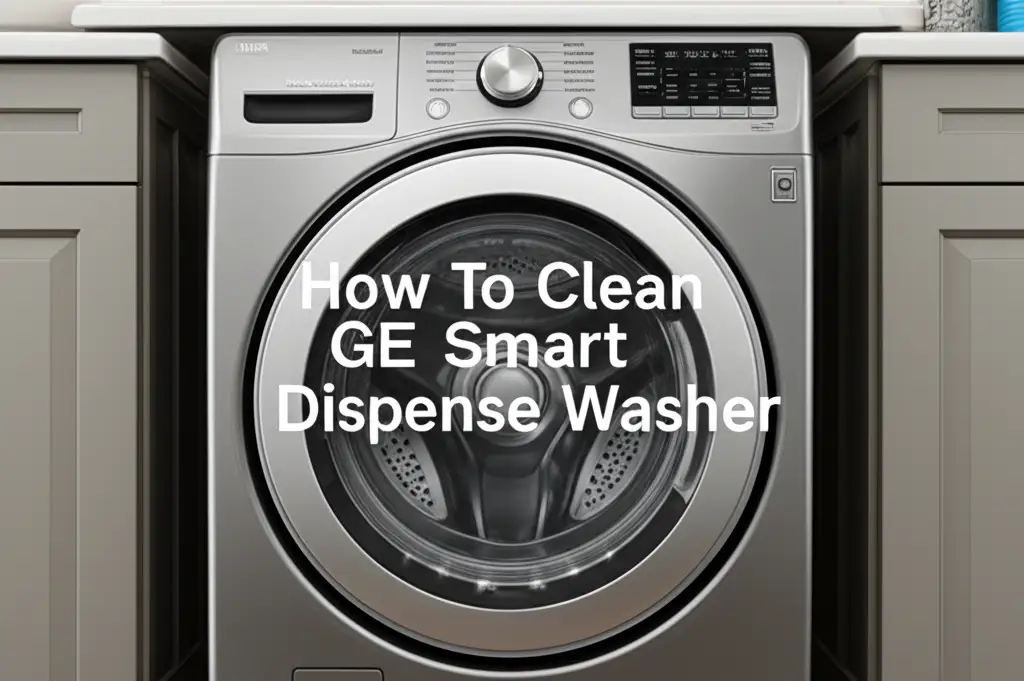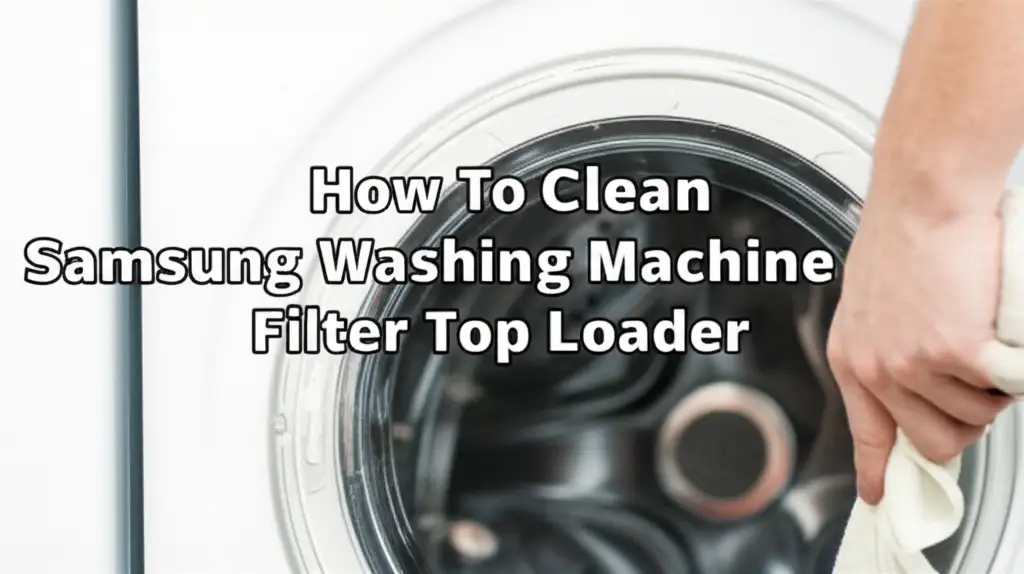· Appliance Maintenance · 14 min read
How To Clean Margarita Machine
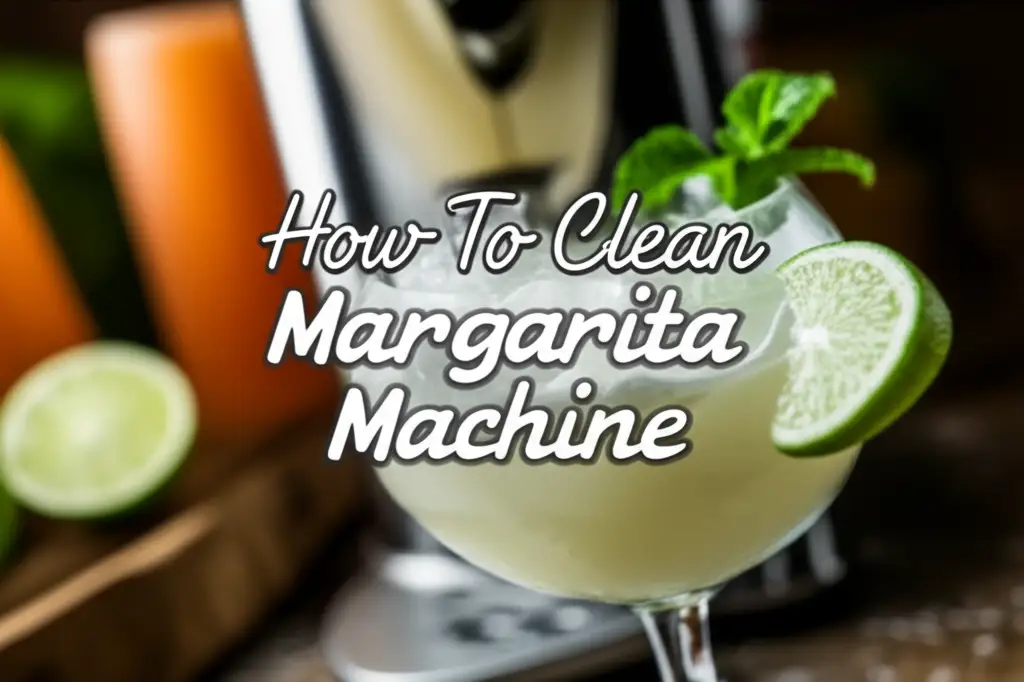
Clean Your Margarita Machine for Perfect Drinks
Serving frosty margaritas from a sparkling clean machine brings joy to any gathering. Knowing how to clean a margarita machine keeps your drinks tasting fresh. Regular cleaning also ensures proper hygiene and helps your machine last longer. This guide will walk you through all the steps, from quick rinses to deep sanitization.
Takeaway
Keeping your margarita machine clean ensures safety and extends its life.
- Clean after every use for basic hygiene.
- Perform deep cleaning monthly for thorough sanitization.
- Disassemble parts carefully for full access to all surfaces.
- Use mild detergents and food-grade sanitizers.
- Dry all parts completely to prevent mold and odors.
To clean a margarita machine, first drain any leftover mix. Then, flush the machine with warm water and mild detergent. Disassemble removable parts like the hopper, auger, and spigot. Wash these components with soap and water, rinse well, and sanitize. Dry everything completely before reassembly to prevent mold.
Why Margarita Machine Cleaning Matters
A clean margarita machine is more than just about good looks; it directly affects the quality and safety of your drinks. Sugary mixes are perfect breeding grounds for bacteria and mold. If you skip regular cleaning, these unwanted guests can quickly grow inside your machine. This causes bad odors and can make people sick.
Dirty machines also affect taste. Leftover mix can turn sour, giving your fresh margaritas an off-flavor. This spoils the experience for you and your guests. Plus, residue buildup clogs moving parts. This makes your machine work harder and can lead to breakdowns. Regular cleaning helps prevent these issues.
I always think of my margarita machine as a food preparation tool. Just like a blender or coffee maker, it needs consistent care. Neglecting it means risking health issues and shortening the machine’s life. A clean machine delivers the best-tasting, safest drinks every time. This also saves you money on repairs or replacements in the future. If you are interested in cleaning other kitchen appliances, you might find our guide on how to clean espresso machine helpful for comparison.
Essential Tools and Cleaning Solutions
Before you start cleaning your margarita machine, gather all the necessary supplies. Having everything ready makes the process smoother and faster. You will need a few basic items found in most kitchens or hardware stores. These tools help you reach every nook and cranny of your machine.
First, get a few soft cloths or sponges. These are good for wiping down surfaces and cleaning removable parts. A small brush, like a bottle brush or a dedicated cleaning brush, is also very helpful. It reaches into narrow tubes and crevices where residue might hide. You will also need a bucket or a large sink for soaking parts.
For cleaning solutions, mild dish soap is usually sufficient for everyday cleaning. Mix it with warm water. For deeper cleaning and sanitizing, white vinegar is a great natural option. You can also buy food-grade sanitizers specifically designed for beverage machines. Always check your machine’s manual for recommended cleaning agents. Avoid harsh chemicals, abrasive scrubbers, or bleach unless specifically stated by the manufacturer. These can damage your machine’s components or leave harmful residues.
Routine Cleaning After Each Use
Cleaning your margarita machine after every use prevents buildup and keeps it ready for the next batch. This routine clean is quick and easy. It focuses on removing fresh mix residues before they harden. I always make sure to do this right after the party ends.
Draining the Leftover Mix
The first step is to empty any remaining margarita mix from the machine. If you have a lot left, you can store it in an airtight container in the refrigerator for later. Open the dispense valve and let all the liquid flow out. Ensure the machine is completely empty.
Next, pour a gallon or two of warm, clean water into the hopper. Let this water circulate through the machine for about five minutes. This helps to rinse out any sticky syrup from the internal lines. Then, drain this water out through the dispense valve. Repeat this flushing process once or twice more until the water runs clear.
Simple Rinse and Wipe Down
After flushing with water, turn off and unplug the machine. This is a crucial safety step. Now, you can start wiping down the exterior and interior surfaces. Use a damp cloth to wipe the outside of the machine. Clean any spills or sticky spots immediately.
For the internal parts that are easily accessible, use a damp cloth or sponge with a little mild dish soap. Wipe down the inside of the hopper and around the auger. Rinse your cloth frequently with clean water. Make sure no soap residue remains. This quick clean makes deep cleaning much easier later on.
Deep Cleaning Your Margarita Machine (Monthly/Bi-Monthly)
Deep cleaning your margarita machine is vital for hygiene and longevity. I recommend doing this monthly or bi-monthly, depending on how often you use it. This process involves disassembling key parts for a thorough wash and sanitization. It ensures no hidden bacteria or mold can grow.
Disassembling Key Components
First, unplug the machine from the power outlet. This is a safety rule you must always follow. Then, begin to carefully take apart the machine. Start with the dispense valve or spigot. These usually twist off or detach with a clip. Remove the drip tray if your model has one.
Next, remove the hopper lid. Inside the hopper, you will find the auger or beater bar. This part churns the mix. It usually lifts straight out. Below the auger, there might be a freezer barrel or other components that detach. Look for any seals or O-rings on these parts. Remove them gently, as they often trap residue. Keep all parts organized so reassembly is easier.
Thorough Washing and Rinsing
Once all removable parts are off, wash them by hand. Use warm water and mild dish soap. Use a small brush or bottle brush to clean the inside of the dispense valve and any tubes. Scrub the auger thoroughly, paying attention to the fins. Clean all seals and O-rings individually. These tiny parts often hide grime.
For the main unit, use a damp cloth with soapy water to wipe down the inside of the hopper and the freezer barrel. Do not submerge the main unit in water. Rinse all removed parts under running water until no soap bubbles remain. Ensure every part feels clean and smooth, without any sticky film.
Sanitizing for Hygiene
Washing removes dirt, but sanitizing kills germs. This is a crucial step for any food or beverage machine. After washing and rinsing all parts, prepare a sanitizing solution. You can use a food-grade sanitizer available at restaurant supply stores. Follow the product’s instructions for mixing. Alternatively, a diluted white vinegar solution works well; use one part white vinegar to four parts water.
Submerge all disassembled parts in the sanitizing solution for the recommended time. For vinegar, about 15-20 minutes is usually enough. For the main machine body, wipe down all food-contact surfaces with a cloth dipped in the sanitizing solution. Allow it to sit for the recommended contact time. After sanitizing, drain the solution and rinse all parts with clean, fresh water. Do not skip this rinse.
Reassembling Your Machine
After cleaning and sanitizing, it is time for reassembly. Make sure all parts are completely dry before putting them back together. Air drying is best, or you can use a clean, lint-free cloth. Moisture can lead to mold growth.
Put the parts back in reverse order of disassembly. Reattach the auger, then the dispense valve. Ensure all seals and O-rings are seated correctly. Misplaced seals can cause leaks. Once fully assembled, your machine is ready for its next use. Following these steps helps maintain a clean and efficient machine. Cleaning similar machines like a how to clean popcorn machine or a how to clean cotton candy machine also involves similar disassembly and thorough cleaning principles.
Cleaning Specific Parts and Common Problem Areas
Some parts of your margarita machine need special attention during cleaning. These are areas where mix can easily stick or where buildup is common. Focusing on these spots during your cleaning routine ensures a truly spotless machine.
The auger, or beater bar, is one such part. This rotating component constantly churns the mix. It often accumulates sticky residue or even mold if not cleaned properly. Its fins and crevices can trap tiny particles. Use a dedicated brush to scrub every part of the auger. Make sure you get into all the grooves.
The dispense valve or spigot is another critical area. This is where the margarita comes out. Sugar from the mix can dry and crystallize inside the valve, causing it to stick or even clog. Disassemble this part completely if possible. Use a small brush to clean the internal passage and the plunger mechanism. Pay attention to any small springs or seals within the valve.
Seals and O-rings are small but vital components. They prevent leaks and keep the mix contained. These rubber or silicone parts can trap bacteria and mold underneath them. Remove them from their grooves gently. Wash them thoroughly with soap and water, then sanitize. Check them for any cracks or signs of wear. Replace them if they look damaged, as old seals can cause leaks or hygiene issues.
Finally, do not forget the drip tray. This catches any drips or spills from the spigot. It can become a breeding ground for bacteria and mold if not emptied and cleaned regularly. Remove the drip tray and wash it with soap and water after every use. A quick wipe down is usually enough, but sometimes it needs a good scrub.
Preventing Mold and Odors in Your Margarita Maker
Mold and odors can quickly ruin your margarita machine experience. They indicate uncleanliness and can pose health risks. Preventing them is much easier than removing them. Proper cleaning and storage habits are your best defense. I always make sure these steps are part of my routine.
The most important step is thorough drying. After you wash and sanitize all parts, let them air dry completely. Moisture is mold’s best friend. Do not reassemble the machine until every component, inside and out, feels completely dry. You can use a clean, lint-free cloth to help speed up the drying process. For hard-to-reach internal areas, leave access panels open for a few hours to allow air circulation.
Proper storage also plays a role. Store your clean, dry machine in a well-ventilated area. Avoid damp basements or humid closets. If your machine sits unused for a long time, consider leaving the hopper lid slightly ajar to allow air to circulate inside. This prevents stale air from getting trapped and causing odors.
For an extra layer of prevention, you can use a white vinegar rinse. After your regular washing and rinsing, but before final drying, circulate a solution of one part white vinegar to four parts water through the machine. Let it sit for 10-15 minutes, then drain. Rinse with fresh water and dry thoroughly. Vinegar is a natural disinfectant and helps deter mold and odor-causing bacteria. Our article on how to clean mold from washing machine offers more insights into mold prevention for appliances. If you’re looking for more general cleaning tips with natural ingredients, check out our guide on how to clean washing machine with baking soda and vinegar.
Troubleshooting Common Cleaning Challenges
Even with a good cleaning routine, you might face some stubborn issues. Knowing how to handle these challenges helps you keep your margarita machine in top shape. I’ve encountered a few problems myself and learned some tricks.
One common issue is sticky residue that just won’t come off. This usually happens with old, dried mix. For these tough spots, try soaking the parts longer in warm, soapy water. You can add a tablespoon of baking soda to the soaking water for extra cleaning power. For very stubborn, sugary buildup, a solution of warm water and a little bit of commercial enzyme cleaner, made for beverage machines, can dissolve it. Always rinse thoroughly after using any special cleaner.
Another problem is cloudy plastic parts, especially the hopper or dispense valve. This often comes from hard water deposits or mineral buildup. A white vinegar solution can work wonders here. Soak the cloudy plastic parts in a 50/50 mix of white vinegar and warm water for 30 minutes to an hour. Then, scrub gently with a soft brush and rinse well. The acidity in the vinegar helps break down mineral deposits.
Sometimes, you might notice small rust spots, especially on older machines or metal components. If it’s surface rust, you can often remove it with a gentle scrub using a paste of baking soda and a little water. Apply the paste, let it sit for a few minutes, then scrub with a non-abrasive pad. Rinse and dry immediately. If rust is deep or on a critical part, consider replacing the component.
Identifying when to replace parts is also important. If a seal is cracked, torn, or no longer fits snugly, it needs replacing. Worn seals can cause leaks or allow bacteria to get into areas that are hard to clean. If the auger or beater bar shows signs of heavy wear, like chipped plastic or bent fins, it might not mix properly anymore. Checking these parts during deep cleaning helps you maintain your machine’s performance.
FAQ Section
How often should I clean my margarita machine?
You should perform a routine clean after every use to remove fresh mix. A deep clean, which involves disassembling parts, is best done monthly or every two months. If you use the machine very often, consider deep cleaning more frequently. This ensures hygiene and prevents buildup.
Can I put margarita machine parts in the dishwasher?
Most manufacturers do not recommend putting margarita machine parts in the dishwasher. High heat can warp plastic components and degrade rubber seals. Always check your machine’s manual for specific cleaning instructions. Hand washing with mild soap and warm water is usually the safest method.
What is the best cleaner for a margarita machine?
A mild dish soap mixed with warm water works well for daily cleaning. For sanitizing, food-grade sanitizers designed for beverage equipment are excellent. White vinegar diluted with water (1:4 ratio) is also an effective natural sanitizer. Always avoid harsh chemicals or abrasive cleaners.
Why does my margarita machine smell bad after cleaning?
A bad smell often means some residue was missed, or parts were not completely dry before reassembly. Moisture trapped inside can lead to mold or bacterial growth, causing odors. Ensure all parts are thoroughly dried after washing and sanitizing. Re-clean with vinegar solution if odors persist.
How do I clean mold from my margarita machine?
If you find mold, immediately deep clean your machine. Disassemble all parts and scrub moldy areas with a brush and soapy water. Then, soak or wipe all parts with a strong sanitizing solution, like a diluted bleach solution (check manual for safety) or a stronger white vinegar solution. Rinse thoroughly and dry completely.
What happens if I don’t clean my margarita machine?
Not cleaning your margarita machine can lead to several problems. Bacteria and mold can grow, making drinks unsafe to consume. Residual sugar can harden, clogging the machine and affecting performance. This can also cause off-flavors in your drinks and shorten the lifespan of your appliance.
Conclusion
Cleaning your margarita machine might seem like an extra task, but it is a simple process that offers big rewards. By following these steps, you keep your machine hygienic and efficient. You prevent health risks and enjoy delicious, fresh-tasting frozen drinks every time. Regular maintenance also extends the life of your appliance, saving you money in the long run.
Remember to perform a quick rinse after each use and schedule a more thorough deep clean monthly. Pay attention to specific parts like the auger and dispense valve. Always ensure all components are completely dry before reassembly to prevent mold and odors. A well-maintained machine is ready to deliver countless batches of perfect margaritas. Take the time to clean your margarita machine properly, and it will serve you well for years to come.
- margarita machine cleaning
- appliance maintenance
- kitchen cleaning
- frozen drink machine
- sanitizing

